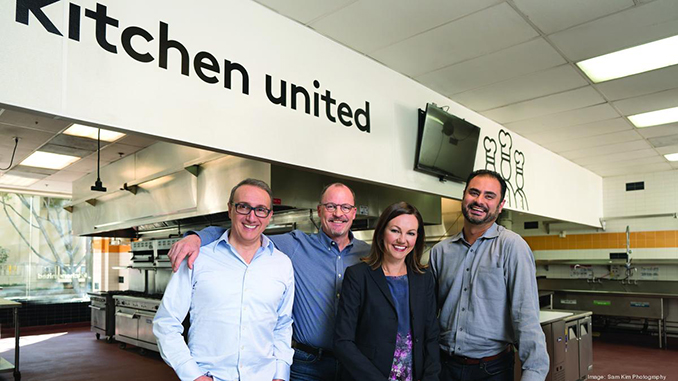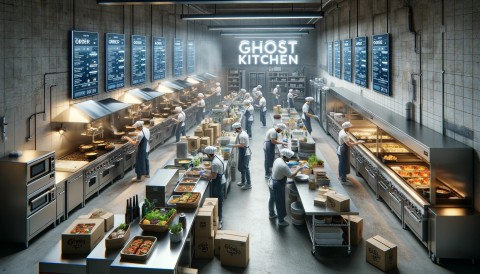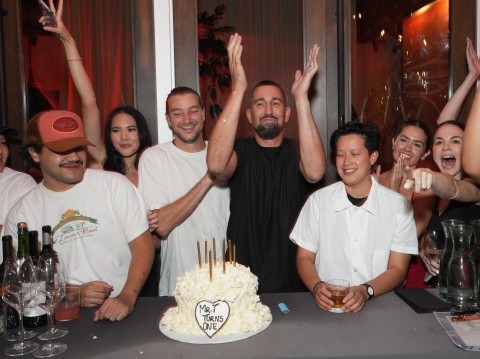 Restaurants are under attack; or at least, that’s how it might feel right now. For concepts large and small, the headwinds of rapidly growing delivery demand, increasing labor cost and simultaneous labor shortage, and expensive expansion in a stifling market are understandably a lot to bear. Sales growth is down across the industry (and has been for some time), and the dine-in channel, traditionally the biggest and most profitable slice of revenue, is shrinking. Operators are scrambling for solutions to these issues, but there are few readily available that don’t require major systemic change.
Restaurants are under attack; or at least, that’s how it might feel right now. For concepts large and small, the headwinds of rapidly growing delivery demand, increasing labor cost and simultaneous labor shortage, and expensive expansion in a stifling market are understandably a lot to bear. Sales growth is down across the industry (and has been for some time), and the dine-in channel, traditionally the biggest and most profitable slice of revenue, is shrinking. Operators are scrambling for solutions to these issues, but there are few readily available that don’t require major systemic change.
All of which is why a group of restaurant people got together to find a new way. A new way to capitalize incrementally on off-premise demand. A new way to operate that doesn’t require a deep pool of labor. A new way to expand that costs exponentially less than a traditional brick-and-stick build; while preserving the quality of any high-grade restaurant kitchen. And while that is three things, they are, collectively, a single “new way.” Call it what you want: a “ghost kitchen,” a “virtual restaurant,” a “dark delivery concept” (a novel phrase), but at Kitchen United, we just call our solution a “restaurant.”
The (Off) Premise
 “Kitchen United provides restaurants a turnkey solution to accelerate growth and offload off-premise preparation and pickup,” is what we say we do. More specifically, Kitchen United builds lots of kitchens in large buildings within strategically located trade areas with high off-premise demand. We curate a selection of restaurants that cater to that demand and move them into the kitchens, and then we support those restaurants as they open and operate an entirely off-premise concept. In short: lots of restaurants operating independently under one Kitchen United roof, all to-go.
“Kitchen United provides restaurants a turnkey solution to accelerate growth and offload off-premise preparation and pickup,” is what we say we do. More specifically, Kitchen United builds lots of kitchens in large buildings within strategically located trade areas with high off-premise demand. We curate a selection of restaurants that cater to that demand and move them into the kitchens, and then we support those restaurants as they open and operate an entirely off-premise concept. In short: lots of restaurants operating independently under one Kitchen United roof, all to-go.
As for how we solve those great, big issues?
Delivery
Here’s the big question: is delivery a problem or an opportunity? The answer hinges on the concept of incremental versus non-incremental. For a national chain, non-incremental delivery sales through a third-party mean paying more for each sale that would otherwise have been in-person. That translates to millions of dollars in lost revenue. For a local restaurant, non-incremental sales means losing what little margin they have now.
But incremental means new consumers discovering and ordering who otherwise would not have, or the same consumers eating an additional meal that they otherwise wouldn’t have. It’s new revenue that’s not taking the place of existing revenue. That’s the way delivery works, or can work, for restaurants.
Kitchen United solves delivery disruption to a restaurant in a couple ways, depending on whether a brand wants to utilize a KU restaurant in new markets or current markets. New markets are a simple sell, as they’re all new consumers and there’s no cannibalization — it’s all incremental. The questions in a new market are whether a dining room-less restaurant can gain traction and recognition in the cluttered third-party marketplaces (Grubhub, DoorDash, etc.), and whether off-premise-only AUV can support a standalone concept. That’s why for the former, KU has an expert, digital-first marketing team to support a restaurant member’s existing marketing efforts, and provide best-practice advice to attract the digitally-native off-premise diner. For the latter, see the Expansion section.
But KU’s solution for delivery also works in a restaurant’s current markets. A member’s kitchen at Kitchen United can take on the excess delivery traffic that disrupts that member’s nearby brick-and-mortar operations; e.g. drivers waiting in lobbies interrupting the dine-in experience, backed-up dine-in tickets during high traffic hours, slow pickup times as drivers circle the restaurant for parking. Having a dedicated off-premise restaurant means improving product and experience quality for both dine-in and at-home consumers, decreasing the operational clutter at brick-and-mortars and providing faster, hotter food for delivery customers.
Labor
The minimum wage is rising and the labor pool is shrinking, and both make life difficult for restaurants. But what if you could open a restaurant with only a staff of two cooks?
In a Kitchen United facility, back of house labor is provided by KU and shared between restaurants – cleaning, maintenance, delivery receiving, food-running from back to front of house – everything except cooking the food. The pick-up center, where drivers and consumers collect their food, is also staffed by KU personnel. This leaves a restaurant to provide cooks for the kitchen, and that’s it.
Expansion
The restaurant economy is saturated with supply, and competition is rife across local, regional, and national markets. KU’s team knows first-hand from prior experience that a traditional brick-and-mortar build can cost a restaurant in the vicinity of two million dollars over a year-and-a-half long construction process. Clearly not an ideal environment for accelerated unit growth.
KU not only facilitates monetary growth through cutting costs and optimizing off-premise channels, but offers a completely new way to open restaurants altogether.
A restaurant at Kitchen United can open its doors 4-6 weeks after the membership signing, and because a member’s construction costs are effectively zero, capital expenses are dramatically reduced. For chain brands this means a faster growth pace, franchised or otherwise, and for smaller restaurants this means expanding much sooner and less expensively than has ever been possible.
Expansion and growth aren’t limited to a single concept, however. Virtual brands such as Grilled Cheese Heaven, run off of the same kitchen line as the “central” brand Canter’s Deli at our Pasadena location. This is a prime example of additional growth within a single KU kitchen. Where the old model is “one restaurant to one building,” we’re not only talking about “multiple restaurants to one building,” but “multiple concepts to one kitchen line.” Expansion is once again a possibility for restaurants of any size to capitalize on and thrive.
Restaurant growth by restaurant people
Kitchen United is a solution designed by restaurant people, for restaurants. Collectively, our staff come from industry backgrounds across the scale – from McDonald’s and Taco Bell to owning and operating a single restaurant in a small town. We’re here to solve the above problems and more for the whole industry, because they’re our problems, too. We’re not satisfied with band-aid fixes. Operating out of a Kitchen United facility is an innovative “third path” to growth and success in the new food economy. A path that takes emerging growth challenges and turns them into growth opportunities. Drop us a line. New markets await you.







